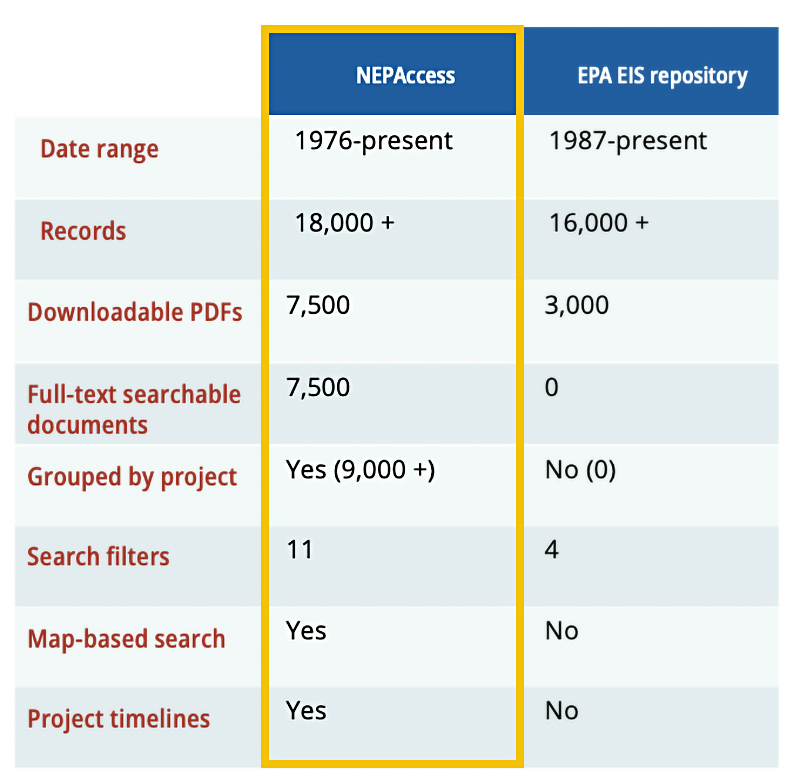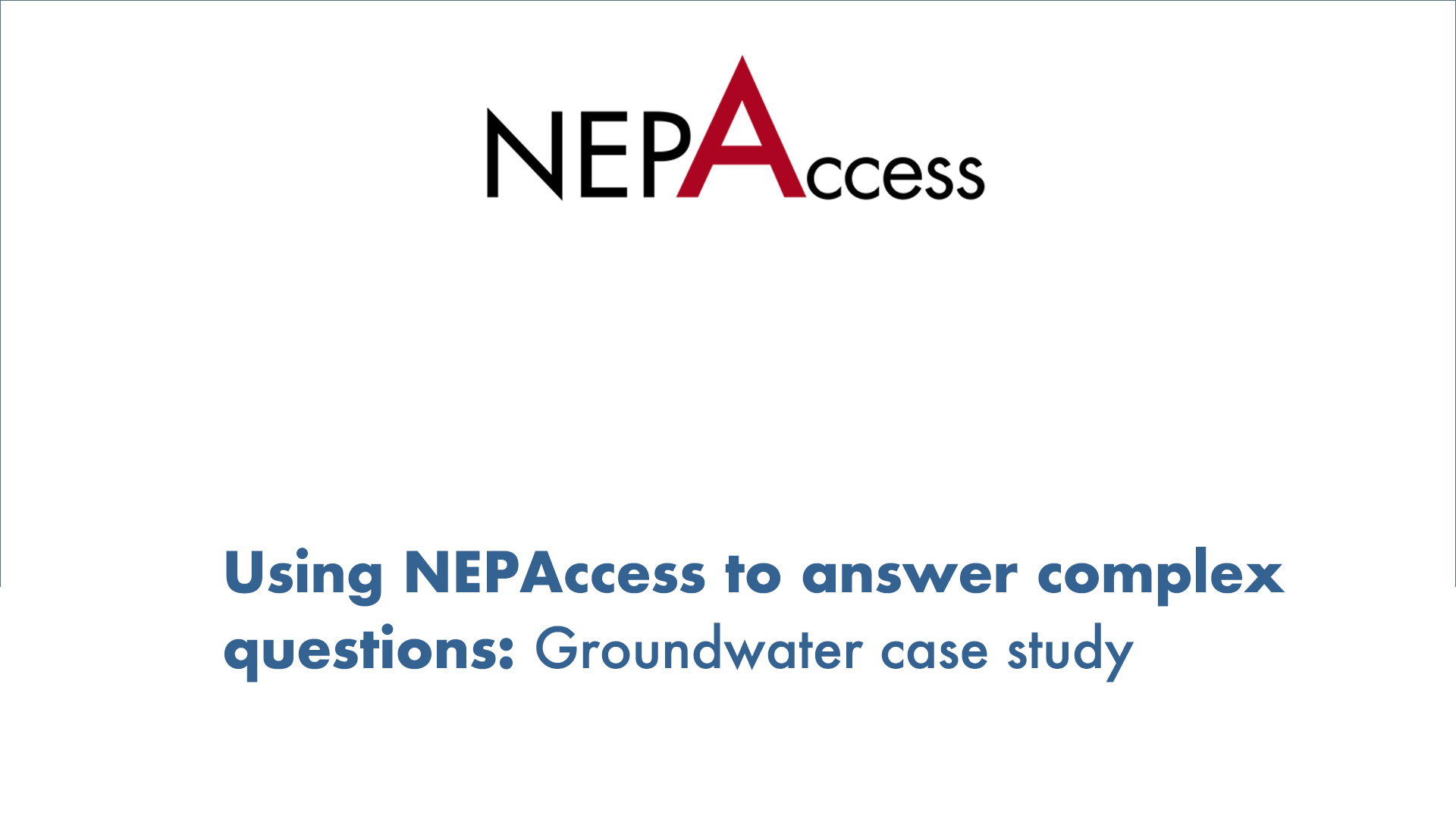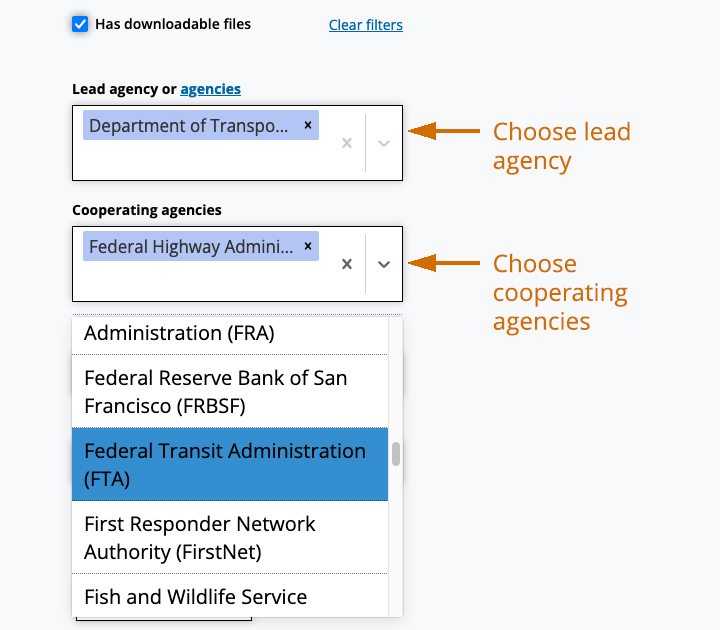NEPAccess 2021-2024
Notice: NEPAccess search functionality is offline as of May 2024.
What did the NEPAccess platform provide?
The National Science Foundation (NSF) funded phase 1 of the NEPAccess project in 2018 to support better infrastructure decisions by making information freely available. Since then, our interdisciplinary team of data scientists, designers, developers, policy experts, scientists, and students has been continuously improving the site.
Our approach combines best practices in data science and engineering with live usability research to understand our users’ needs, goals, and desires. Our users range from private citizens to government agency professionals, and creating a tool that works effectively for this wide range of user types is a key challenge.
Quick Facts
NEPAccess helps you find more—and more relevant—information from environmental impact statements than any other single source.

Search demonstration video
“It’s very useful for us to look at other projects in the area, in the west, and look for similar situations where there’s a mine and we have an analysis of groundwater resources, get the EIS, open it up, and read how they approached that problem. The problem is, first you have to find the EISs that are pertinent.”

What we built

The most comprehensive cross-agency collection of EISs.
Enabled users to:
✓ Quickly search one place to retrieve documents from 20+ agencies
(including EPA, FERC, BLM, FS, etc.)
How we did it:
✓ Collected data from agency APIs to ingest all available metadata and PDFs for each EIS.
✓ Curation of records and PDFs not available from EPA.

Only source with full-text search of PDFs
Enabled users to:
✓ Search full text of EIS documents that are hundreds of pages long within seconds rather than hours.
✓ Find more relevant results than on sites like EPA, which is searchable only by title or basic metadata.
✓ Tailor searches to specific research needs (e.g., similar actions, their alternatives, mitigation, and more).
✓ Compound searches with multiple search terms.
How we did it:
✓ Converted all available PDFs to machine-readable text and data.


Linked all stages of EIS process (NOI through ROD)
Enabled users to:
✓ Retrieve and display all results related to a single process in one search, even when the title has changed.
✓ Analyze project timeline data and other patterns and trends related to project management and workflows.
How we did it:
✓ Used natural language processing (NLP) and manual verification to identify related document titles.
✓ Configured user interface (UI) to display related EIS records as a chronological group.


Enhanced project metadata
Enabled users to:
✓ Easily retrieve and analyze more relevant documents by narrowing searches to specific action types or decision types.
How we did it:
✓ Trained machine learning models to extract and generate new metadata for each document on 11 action types and 5 decision types.

Enhanced geographical metadata
Enabled users to:
✓ Use searchable map or geographical filter menu to narrow results (e.g., to a single county, or a group of neighboring counties or states).
How we did it:
✓ Trained machine learning model to extract state- and county-level location data from titles, basic metadata, and full-text documents.
✓ Automatically linked location data to map coordinates to populate searchable map interface.




